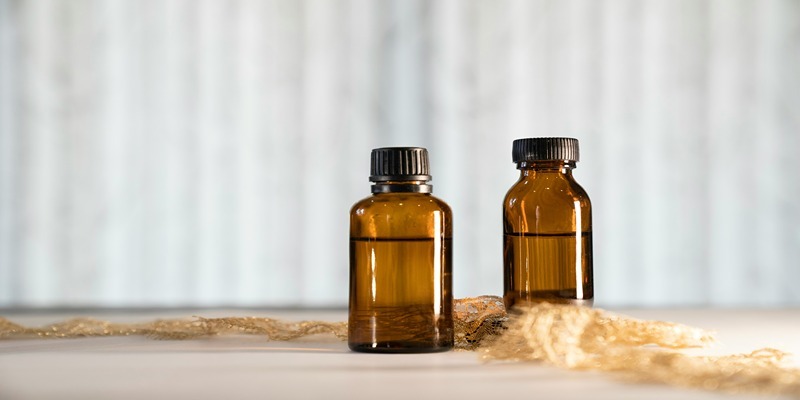Menstruation cycle and blood color, what helps with period cramps, late period, and all the facts you need to know.
Dec 27, 2023 By Madison Evans
Menstruation is a natural bodily function experienced by many individuals worldwide. Despite its prevalence, numerous misconceptions and myths surround this monthly phenomenon. This article highlights some critical facts and clarifies subjects often clouded by misinformation. Scientific studies and expert opinions back all the details provided here.
Menstruation is a complex hormonal and physiological process that prepares the body for pregnancy. Beyond monthly bleeding, it's a dynamic play of hormones, physical changes, and fertility.
10 Must-Know Facts About Menstruation
Ovulation and Menstruation
Menstruation revolves around ovulation. An LH surge causes the ovaries to produce an egg on day 14. Fertilizing this egg with sperm causes pregnancy. However, the egg dissolves without fertilization, and the thicker uterine lining sheds, causing menstruation.
Changes in cycle length or skipped periods can sometimes hint at an anovulatory cycle (a cycle where ovulation doesn't occur). This can be a reason behind a late period, although other factors such as stress, weight changes, or certain medications can also contribute.
Hormonal Fluctuations
A symphony of hormones directs the menstrual cycle. The Follicle-Stimulating Hormone (FSH) starts the process, stimulating the ovaries to prepare an egg. Estrogen levels rise to thicken the uterus lining, while LH triggers ovulation. Post ovulation, progesterone levels increase to maintain the uterine lining for a potential pregnancy.
Periods Vary Among Individuals
Every individual's experience with menstruation is distinct. This variability isn't just about the duration of the cycle but also pertains to the flow, symptoms, and even period blood color.
Duration and Flow: While many believe that a menstrual cycle is strictly 28 days, it can range from 21 to 35 days. Some might have three days, while others can experience bleeding for up to 7 days. Recognizing one's regular pattern is essential for tracking any unusual changes.
Period blood color can differ based on the day of menstruation. The flow might be slow at the start, leading to darker, almost brownish blood. As the flow increases, it can turn red, eventually darkening again as the period ends.
Symptoms and Remedies
Symptoms like bloating, mood changes, and cramps can vary in intensity. When considering what helps with period cramps, it's essential to recognize that solutions might differ for each individual. Over-the-counter pain relievers might be effective for some, while others might benefit from heat packs or dietary changes. Understanding what helps with period cramps for one's specific body is crucial for managing this monthly discomfort.
The Volume of Blood Loss
One of the most common misconceptions about periods is the volume of blood loss. Imagery in media and personal experiences can sometimes exaggerate perceptions.
According to data from reputable health organizations, most individuals lose between 3 and 6 tablespoons of blood during their period. However, it's essential to account for the presence of other fluids and tissues in menstrual flow. While the perceived volume might seem more, blood loss remains within this range.
Observing the period of blood color can offer insights into blood loss. A consistently dark color might suggest a lighter flow, while a bright red could indicate a heavier flow.
Heavy Menstrual Bleeding (HMB)
While it's normal to have variations in menstrual flow, consistently heavy bleeding, termed HMB, warrants attention. Factors contributing to heavy bleeding can include hormonal imbalances, fibroids, or certain medications. A late period followed by heavy bleeding can sometimes signify a miscarriage, making it essential to consult with healthcare professionals.
Recognizing what helps with period cramps and understanding one's typical period blood color can be instrumental in spotting deviations from the norm.
Choosing the Right Product

Selection should be based on convenience, lifestyle, and flow. Changing these products at regular intervals is essential. For instance, a tampon or cup should not be left in for more than 8 hours to avoid the risk of Toxic Shock Syndrome.
The period blood color on the sanitary product can give cues about when it's time for a change. A saturated deep red indicates it's time for a replacement to maintain hygiene.
Daily Cleanliness Routine
Washing the genital area with mild soap and water at least twice daily reduces the risk of infections. Douching, on the other hand, can disrupt the natural balance and is generally discouraged.
Observing what helps with period cramps, some women opt for warm baths, which can also promote cleanliness. A warm bath not only aids in hygiene but can alleviate some menstrual discomforts.
Period Pains and Management
Cramps, medically termed dysmenorrhea, can range from mild to debilitating. They result from the uterus contracting to shed its lining. But why are some cramps annoying while others disrupt daily life?
Types of Dysmenorrhea
Primary dysmenorrhea refers to common menstrual cramps and doesn't indicate any other medical condition. These cramps usually begin 1-2 days before menstruation, and Primary dysmenorrhea is menstrual cramps without a diagnosis. These cramps start 1-2 days before menstruation and last 2–4 days. They usually improve with age or delivery.
Endometriosis or fibroids cause secondary dysmenorrhea. This pain begins earlier and lasts longer than primary dysmenorrhea.
Pain Management
Knowing what helps with period cramps can make this time of month easier. Over-the-counter painkillers like ibuprofen can assist. Heat patches or warm compresses can offer relief for those seeking non-pharmaceutical remedies. Dietary and lifestyle changes, like reducing caffeine intake and engaging in light exercise, can also help.
Keeping track of period blood color and flow might provide insights into the severity of cramps. Sometimes, a late period followed by intense cramps may need further investigation.
Irregular Periods: Causes and Implications
A late period can cause anxiety, especially if pregnancy is a concern. But irregular periods can be due to various reasons, not just potential conception.
Potential Causes
Stress, significant weight loss or gain, and even travel can cause a late period. Other factors include illnesses, medications, and conditions like polycystic ovary syndrome (PCOS). It's crucial to remember that while having a single late period is expected, consistently irregular cycles need medical attention.
Period blood color can sometimes hint at reasons for irregularity. Lighter shades may suggest hormonal imbalances, while a sudden heavy flow after a late period may point to issues like endometrial hyperplasia.
Implications and Management
Beyond the concern of pregnancy, irregular periods can hint at other health issues. PCOS, thyroid disorders, and even premature ovarian failure can cause inconsistent cycles. When determining the cause of a late period, consulting with a healthcare professional is essential. They can guide potential treatments, management strategies, and, when necessary, further diagnostic tests.
Period Myths and Misconceptions

Misinformation and myths surrounding menstruation have existed for centuries. At the same time, modern science has debunked many, some persist, affecting how menstruation is perceived and experienced.
Myth: A Regular 28-Day Cycle is a Must
While a 28-day cycle is often cited as the standard, menstrual cycles can range between 21 and 35 days. Understanding your body's rhythm rather than adhering to a perceived norm is crucial. Factors like stress, medication, or even weight changes can contribute to a late period, making it essential to track your regularity.
Myth: Period Blood Color Indicates Health Issues
Many believe that the period's blood color directly indicates health concerns. While drastic color changes can sometimes mean health issues, minor variations are normal. The period blood color might start as dark brown at the beginning, turn bright red during peak flow, and then darken again towards the end. Considering other symptoms or irregularities alongside any change in period blood color is vital before jumping to conclusions.
Myth: Pain is Normal, No Matter How Severe
While mild to moderate cramps are common, intense pain that hampers daily activities is not a sign to be ignored. A medical consultation is recommended for those wondering what helps with period cramps of this severity. Severe pain can be indicative of conditions like endometriosis or fibroids.
-
 Jul 31, 2024
Jul 31, 2024Top Azelaic Acid Serums for Clear Skin
Explore the best azelaic acid serums to reduce acne and hyperpigmentation for clearer skin.
-
 Aug 01, 2024
Aug 01, 2024Using Kojic Acid Soap for Dark Spots
Learn how to use kojic acid soap effectively to reduce dark spots and acne for clearer skin.
-
 Dec 15, 2023
Dec 15, 2023This comprehensive guide explains the history, method, potential benefits, and risks of oil pulling.
Oil Pulling: A Comprehensive Guide
-
 Feb 16, 2024
Feb 16, 2024All About Breast Cancer: A Detailed Overview
This comprehensive guide covers various types of breast cancer, their symptoms, risk factors, and treatment options. It also provides tips for managing life after diagnosis.
